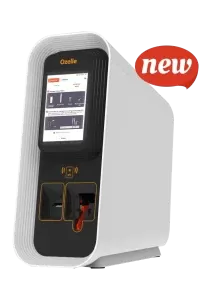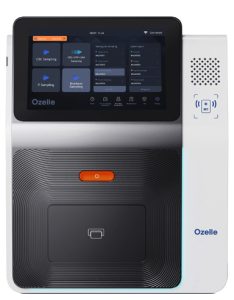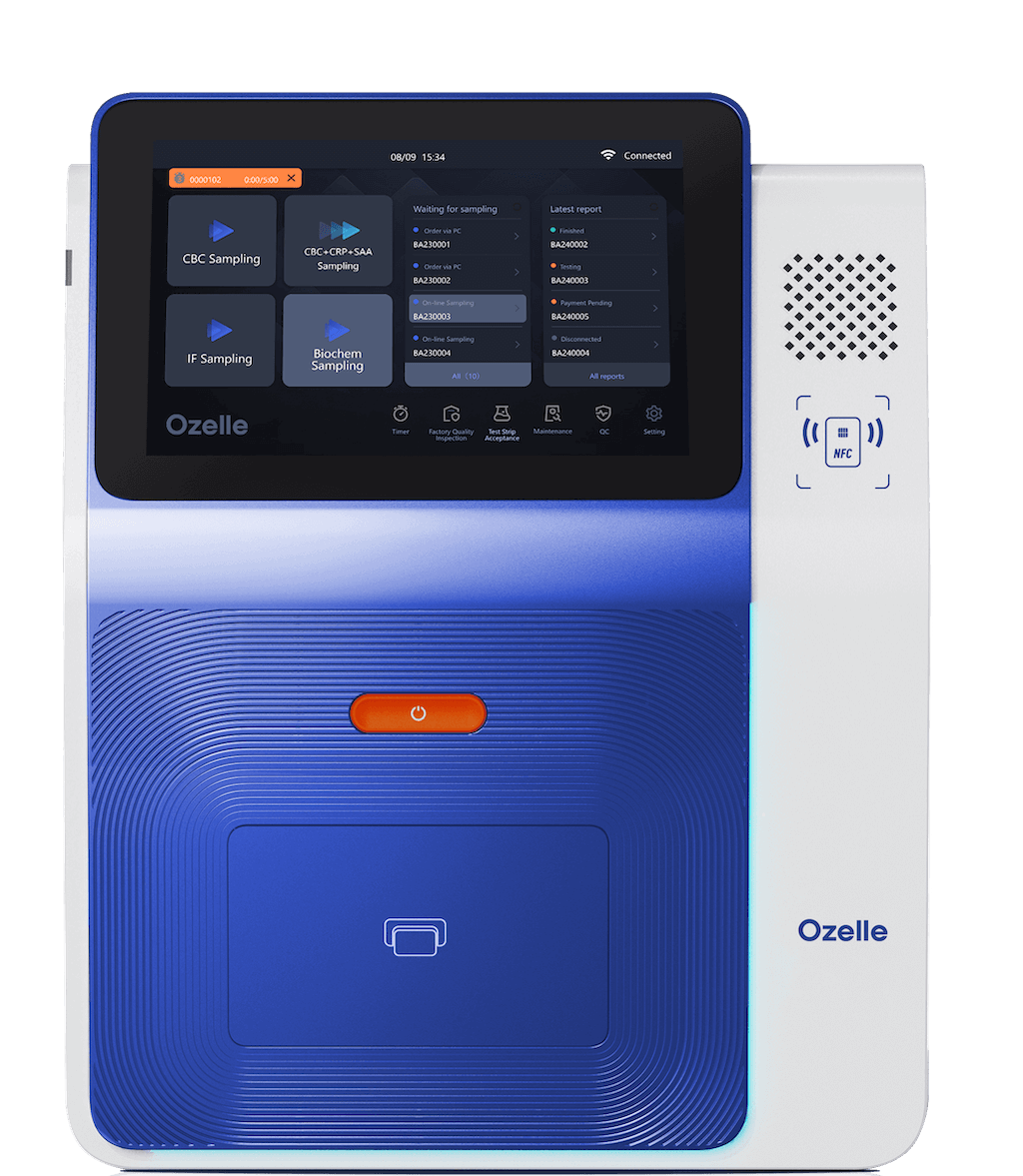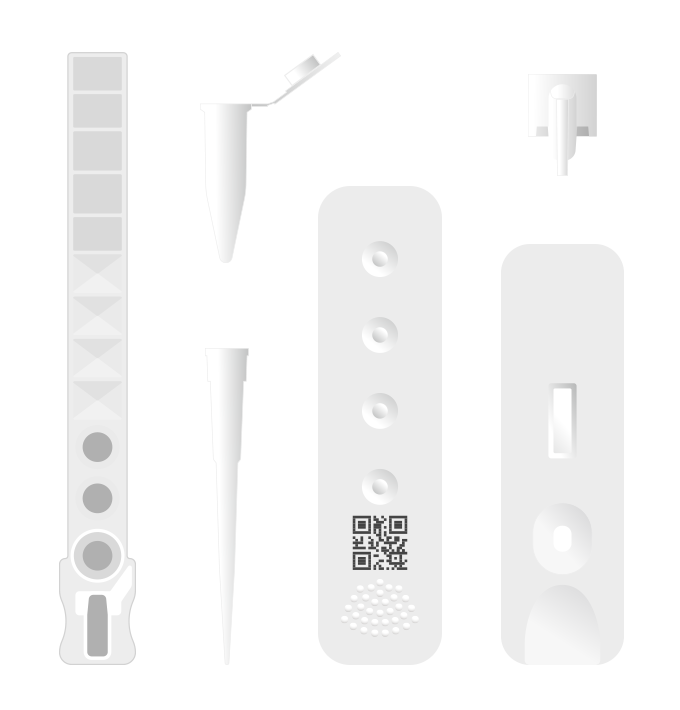Why Selecting the Right CBC Hematology Analyzer Matters
The Complete Blood Count (CBC) is one of the most frequently ordered diagnostic tests in healthcare. Selecting the appropriate hematology analyzer represents a critical investment decision that extends far beyond the initial purchase price. The right equipment directly impacts diagnostic accuracy, clinical outcomes, and operational efficiency while influencing long-term financial performance.
Impact on Diagnostic Accuracy
Modern CBC analyzers deliver vastly different diagnostic capabilities. Traditional impedance-based systems excel at quantification—measuring cell counts with precision—yet provide limited insight into cell morphology. Advanced AI-powered analyzers, by contrast, combine counting capabilities with morphological analysis, capturing cellular details that reveal early pathological changes. This distinction becomes critical when diagnosing acute leukemia, severe infections, or bone marrow disorders, where morphological abnormalities often appear before traditional parameters shift significantly.
Operational Efficiency and Cost Implications
The analyzer’s throughput, sample processing time, maintenance requirements, and ease of operation collectively determine daily productivity. A system requiring 20 minutes of calibration and routine maintenance between batches creates different operational dynamics than a maintenance-free cartridge-based platform. Staff expertise requirements also vary significantly—some analyzers demand specialized technician training, while others operate with minimal training requirements. These factors directly influence staffing costs and laboratory utilization rates.
Long-Term ROI Considerations
Healthcare facilities should evaluate total cost of ownership (TCO) across five-year horizons. This calculation encompasses purchase price, consumable costs per test, maintenance and service expenses, reagent storage infrastructure, and staff training investments. Remarkably, analyzers with higher purchase prices sometimes deliver superior five-year TCO through lower per-test reagent costs or reduced maintenance burden, making comprehensive financial analysis essential before purchase decisions.
Key Factors When Evaluating a CBC Hematology Analyzer
Testing Parameters and Clinical Requirements
3-Diff vs 5-Diff vs 7-Diff CBC Analyzers
Differential capability determines which cell populations an analyzer can distinguish. Three-differential systems identify three white blood cell categories: granulocytes, lymphocytes, and mid-range cells—sufficient for routine primary care screening. Five-differential analyzers add eosinophils and basophils, providing enhanced infection and allergy detection. Seven-differential analyzers (also called 7-diff) distinguish seven distinct populations while identifying abnormal cells, enabling detection of complex hematologic disorders.
Advanced Parameters: 7-Diff CBC with 37 Parameters
Modern 7-diff analyzers deliver comprehensive cellular assessment. Beyond standard differential counts (neutrophils, lymphocytes, monocytes, eosinophils, basophils), these systems identify:
- Immature neutrophils: NST (nucleated neutrophils), NSG (nuclear-shifted granulocytes), NSH (segmented mature neutrophils)
- Abnormal lymphocytes: ALY (abnormal lymphocytes)
- Platelet aggregates: PAg (immature platelets or aggregates)
- Reticulocytes: RET (young red blood cells indicating bone marrow response)
These parameters enable early detection of leukemias, severe infections, hemolytic anemias, and chemotherapy monitoring—situations where standard CBC parameters alone may miss critical diagnostic information.
Morphology Detection Capabilities
AI-powered analyzers capture high-resolution cell images combined with deep learning algorithms trained on millions of expert-annotated samples. This technology detects morphological abnormalities like schistocytes, echinocytes, or teardrop cells that traditional impedance methods cannot identify, delivering morphological context clinicians have historically required manual microscopy to assess.
Throughput Requirements and Sample Capacity
Facility volume directly dictates required throughput. Large hospitals processing hundreds of daily samples need analyzers capable of 50-120 samples per hour. Community clinics with lower volume may prioritize ease of use and compact footprint over processing speed. Advanced 7-diff analyzers typically process 8-12 samples per hour, while entry-level 3-diff systems achieve 12 samples per hour through simplified analysis protocols.
Turnaround Time for CBC Results
The 6-minute result time from advanced analyzers directly improves clinical decision-making in emergency departments, intensive care units, and intraoperative settings by enabling rapid intervention without extended delays. However, this performance is specific to decentralized point-of-care testing systems with AI-enhanced cell morphology capabilities, not simply a function of cartridge-based maintenance-free design.
Technology Comparison: Impedance vs Flow Cytometry vs Optical
Impedance-Based Systems measure electrical resistance changes as cells pass through apertures, distinguishing cells primarily by size. These systems are economical, require minimal maintenance, and deliver fast results, but provide limited morphological information.
Flow Cytometry uses laser light and fluorescent markers to categorize cells based on multiple parameters including size, complexity, and granularity. This technology enables accurate 5-part differentials and abnormal cell flagging but requires sophisticated reagent preparation and maintenance.
Optical Analysis with AI combines high-resolution imaging with deep learning algorithms, enabling simultaneous counting and morphological assessment. This approach captures morphological details previously requiring manual microscopy while maintaining automated efficiency and maintenance-free operation through single-use cartridges.
CBC Hematology Analyzer Comparison: Technologies and Leading Options
Traditional Impedance-Based Systems use the Coulter Principle to measure electrical resistance as cells pass through an aperture, enabling rapid 3-part differentials. These systems excel at quantification with high accuracy (±1%) but cannot assess morphology.
Advanced Optical Analysis CBC Analyzers employ laser flow cytometry and multi-angle light scatter to capture cell granularity, complexity, and morphology, delivering 5–7-part differentials with superior abnormality detection.
AI-Powered CBC Systems integrate deep learning algorithms trained on millions of samples with high-resolution imaging (4-megapixel, 50 fps), enabling automated morphological classification and abnormal cell flagging. Ozelle’s EHBT-75 exemplifies this approach: 37 parameters, AI-detected immature neutrophils (NST/NSG/NSH), reticulocytes (RET), and morphological abnormalities—all within 6 minutes.
| Specification | Flow Cytometry | AI Optical/Morphology |
| Differential Level | 5-part | 7-part + morphology |
| Parameters | 24–28 | 35–40+ |
| Result Time | 3–5 minutes | 5–6 minutes |
| Throughput | 30–50 samples/hr | 8–12 samples/hr |
| Morphology Detection | Limited | AI-powered, comprehensive |
| Maintenance | Frequent reagent prep | Maintenance-free cartridges |
| Abnormal Cell Flagging | Enhanced | AI-driven detection |
| Cost per Test | $5–10 | $8–15 |
| Capital Investment | $30K–60K | $40K–80K |
| Ideal Settings | clinics, small laboratories | Advanced labs, clinics, tertiary care, hospitals |
| LIS Integration | Full connectivity | WiFi/Bluetooth/Ethernet |
| Training Requirements | Moderate | Minimal (intuitive interface) |
Cost Analysis: CBC Hematology Analyzer Investment
Initial Purchase Price
Equipment costs vary based on capabilities, ranging from compact 3-diff analyzers at entry-level pricing to advanced 7-diff systems costingmore. Multi-functional integrated platforms consolidating hematology, chemistry, and immunoassay capabilities represent moderate price increases relative to their ability to replace multiple separate instruments.
Maintenance and Reagent Costs
Traditional continuous-feed analyzers require regular maintenance including system flushing, calibration verification, and component replacement—generating recurring service costs. Cartridge-based maintenance-free systems eliminate these burdens but often feature higher per-test consumable costs reflecting individual cartridge expenses. Chemical reagent storage infrastructure and biological waste disposal systems represent additional considerations for traditional analyzers, while room-temperature cartridge storage dramatically simplifies facility requirements.
ROI Calculation Framework
ROI calculations should quantify improved diagnostic accuracy benefits (earlier disease detection, reduced manual review rates), enhanced operational efficiency (reduced turnaround time enabling faster patient discharge, improved staff productivity), and space optimization savings (consolidating multiple instruments into single platforms). These intangible benefits frequently exceed initial equipment cost savings through improved clinical outcomes and enhanced patient satisfaction.
Implementation Considerations for CBC Hematology Analyzer Selection
Space and Infrastructure Requirements
Compact maintenance-free analyzers require minimal facility modifications—standard electrical outlets and room-temperature storage suffice. Traditional analyzers often require dedicated utility infrastructure including deionized water systems, biological waste management connections, and additional workspace for reagent preparation areas. Facility renovation costs, if required, significantly impact total investment.
Staff Training Requirements
Maintenance-free systems with intuitive four-step workflows require minimal specialized training, enabling operation by general clinical staff. Advanced 7-diff systems demand understanding of morphology interpretation and abnormal cell recognition to appropriately manage results. High-complexity traditional analyzers require trained laboratory technicians with ongoing education ensuring competency as protocols evolve.
Integration with Existing Systems
Modern analyzers integrate with Laboratory Information Systems (LIS) via standardized HL7 protocols, USB connections, Ethernet, Wi-Fi, and Bluetooth, enabling seamless data flow and automated result reporting. Before purchase, facility IT departments should verify integration compatibility with existing systems, confirming data security protocols and backup procedures align with institutional requirements.
Vendor Support and Warranty Options
Comprehensive warranty coverage, responsive service availability, reagent supply reliability, and software update support influence long-term satisfaction and equipment reliability. Manufacturers should provide clear response time commitments, spare parts availability, and technical support accessibility. Multi-year extended warranties may justify higher equipment costs through guaranteed service access and parts replacement provisions.
Multiple Application Scenarios
Clinical Facilities: Primary care clinics benefit from compact 3-diff analyzers enabling same-visit diagnosis and treatment decisions, improving patient experience and clinical efficiency.
Hospital Laboratories: Large hospitals require high-throughput analyzers capable of handling diverse patient populations including oncology, intensive care, and emergency patients, often benefiting from multi-functional consolidation.
Mobile Units and Healthcare Outreach: Compact, maintenance-free, battery-optional analyzers bring laboratory-grade diagnostics to underserved communities, refugee camps, and remote regions where traditional equipment proves impractical.
Pharmacies and Urgent Care: CLIA-waived point-of-care analyzers enable pharmacist-led health screening and monitoring, expanding community access to diagnostic capability.
Veterinary Clinics: Species-specific analyzers adapted for animal blood analysis support veterinary diagnostics, with multi-functional platforms supporting simultaneous urine and fecal analysis.
Conclusion: Decision Framework for CBC Hematology Analyzer Purchase
Selecting the appropriate CBC hematology analyzer requires balancing clinical requirements, operational capabilities, financial constraints, and long-term organizational strategy. Facilities should systematically evaluate testing parameters against clinical case mix, assess throughput requirements based on realistic volume projections, calculate five-year total cost of ownership incorporating maintenance burden and consumable expenses, and verify integration compatibility with existing information systems.
The optimal analyzer rarely represents the lowest initial purchase price or highest technology capability, but rather the equipment delivering appropriate diagnostic sophistication, sustainable operational efficiency, and favorable long-term financial performance aligned with facility mission and patient population needs. By conducting comprehensive analysis across technology options, financial models, and implementation factors, healthcare leaders can confidently select equipment providing superior diagnostic capability, enhanced clinical outcomes, and optimized return on investment for years to come.





